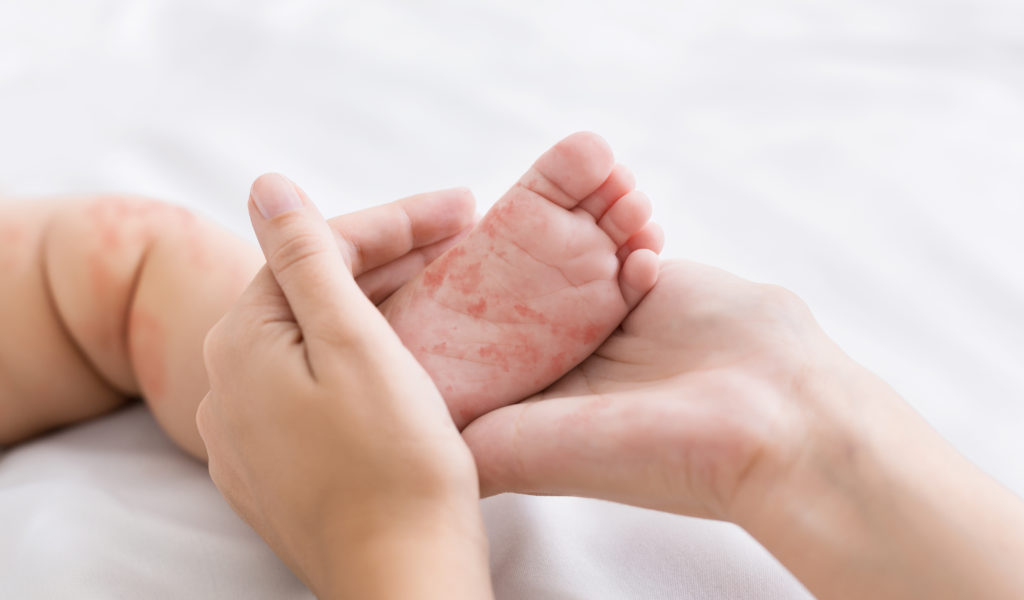Over the last few weeks, Dayton Children’s has been seeing a common theme: kids with hand, foot, and mouth disease.
“Hand, foot and mouth usually hits our area in May and June, but it is hitting a little later this year than normal,” says Dr. Lisa Ziemnik, division chief of Dayton Children’s Kids Express and urgent care. “I believe we are seeing more of it this year because fewer kids have natural immunity to the virus due to last year’s quarantine. This is making them more susceptible as they are exposed to germs this summer.”
Here’s what you need to know about this pesky virus.
What is hand, foot and mouth disease (HFM)?
HFM is a common viral infection that causes painful red blisters in the mouth and throat, and on the hands, feet, and diaper area. It is contagious and easily spreads to others through contact with unwashed hands, feces, saliva, mucus from the nose, or fluid from the blisters. Kids under age 5 are most at risk for HFM, as infections are common in childcare centers, preschools, and other places where kids are in close quarters.
Besides the blisters, kids often have a fever for a few days and can get dehydrated because it hurts to swallow liquids. Symptoms usually clear up within a week and kids recover completely.
There’s no cure for HFM and no vaccine to prevent it, but your doctor can recommend home care to make your child more comfortable during recovery.
What are the signs?
The telltale sign of HFM are red blisters that usually develop one to two days into the illness. They may appear on the soles of the feet or the palms of the hand and look like flat red spots or red blisters. The rash may also appear on other parts of the body such as the buttocks, thighs and arms. However, some kids will have no problems other than sores in the back of the throat.
How is it treated?
Unfortunately, there is no specific treatment or antibiotic that can be given for hand, foot and mouth. Do your best to keep your child comfortable and let the virus run its course. HFM can last one to two weeks.
Can my child go to school/camp/childcare if they have HFM?
To prevent the spread of HFM, keep kids home from school and childcare while they have a fever or open blisters on the skin and in the mouth.
Can adults get HFM?
While not as common, adults can get HFM. They usually experience milder symptoms but sometimes have severe symptoms as well. The treatment is the same for adults as it is for children.
Can HFM be prevented?
Hand washing is the best protection. Remind everyone in your family to wash their hands well and often, especially after using the toilet or changing a diaper, and before preparing or eating food.
Shared toys in childcare centers should be cleaned often with a disinfectant because many viruses can live on objects for a few days.
If your child has been exposed, symptoms of the disease will appear within three to six days if they have contracted the disease.



